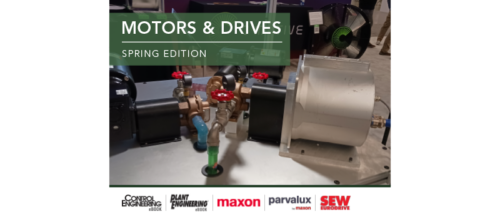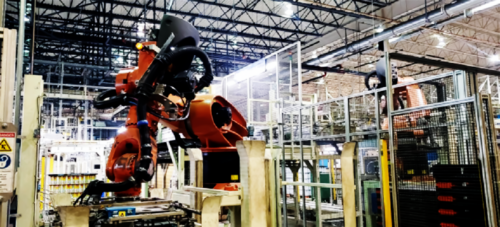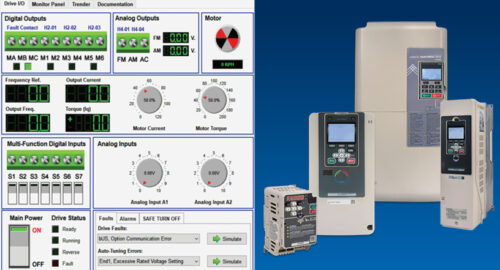Decentralized Control: Understand the advantages
Moving motor-control functions from a central control cabinet onto a machine or the plant floor puts control devices closer to the motors actuating the process. With appropriate planning, explains SEW Eurodrive (www.seweurodrive.com), such designs deliver significant cost savings in engineering time and materials, and through the automation's life cycle.
Sidebars: White paper addresses other decentralized control issues
Moving motor-control functions from a central control cabinet onto a machine or the plant floor puts control devices closer to the motors actuating the process. With appropriate planning, explains SEW Eurodrive ( www.seweurodrive.com ) , such designs deliver significant cost savings in engineering time and materials, and through the automation’s life cycle. Savings result from less wiring, smaller control panels, reduced installation times through drive and motor precommissioning, improved machine performance, less maintenance and fast replacement of electronic components without wiring.
Decentralization can occur at many levels, the company says, from a motor starter or drive located at the motor to a fully decentralized system with a variable-frequency drive, overload protection, motor disconnect switch, I/O and bus module, in one package installed on or near the motor. In the early 1990s, decentralized control applications began in Europe. The automotive industry adopted it first in North America, SEW Eurodrive says, because it simplified production-line changes and reduced engineering costs. Decentralized design is now considered for many applications, including material handling and packaging.
Applications cost 30 percent less
Implementations with 10 or more motors are best for decentralized designs, such as large conveyor systems for material-handling applications in logistics, packaging, food and beverage processing and automotive assembly. Centralization requires more wiring, covering wider areas.
Field tests show total savings of up to 30 percent, due to less engineering time, fewer components, less wiring, smaller panels, smaller PLCs and faster installation, debugging and commissioning.
Seven ways to savings
1. Panel savings. In a decentralized system, the motor disconnect switch, overload and bus capability are built into the drive, mounted near the motor. Local I/O connections reduce the number of components.
2. Fewer wires from a central location to motors results in less potential for cross-talking noise and electromagnetic interference—a major source of machine downtime. Subsequent changes or upgrades to add sensors are easier.
3. Less complexity translates to easier commissioning and lower maintenance costs. Troubleshooting, repairs or replacing failed components are faster.
4. Programming is easier; simpler logic devices in the field each carry only the code for a specific set of activities, so the PLC can be smaller and less expensive, since its primary function becomes system monitoring over Fieldbus or Ethernet protocols. Systems compatible with IEC 61131-3 standard languages provide options; most drives have pre-programmed application routines, which reduces programming and debugging time and eases commissioning.
5. While the use of a digital industrial network or Fieldbus isn’t always needed, such communication capabilities can provide important control data, speed, ramp, unit status and other information for more efficient operations.
6. “Right-size” the drive. Don’t buy into the suggestion that decentralized control requires that drives withstand 150 percent of normal operating current; a 1-hp drive serves a 1-hp system in all applications, except, perhaps, in rare high-cycling operations, where a high starting torque is needed.
7. Get what you need.
Most decentralized systems include an integrated, UL-rated motor disconnect switch (although an IP69k-rated system does require a UL-rated disconnect be placed away from washdown areas).
A starter, even a soft starter, doesn’t modulate starts and stops as well as a variable-frequency drive (there’s very little price difference between starters and drives).
One drive can handle multiple motors (with 62 potential nodes, an SEW system can control up to 186 motors—three times that of some other systems, the company says).
Some systems integrate motor brake control without a separate brake relay. A brake resistor can dissipate regenerative energy from deceleration.
Architectures with a safety circuit eliminate the need for contactors, resulting in estimated $650 in savings for each 5-hp drive in components (by using one safety relay instead of one safety relay and two contactors for each drive).
Connector options and plug-in cables eliminate manual wiring and related errors.
More information is available:
SEW Eurodrive , 864/439-7537
www.seweurodrive.com
Author Information
Edited by Mark T. Hoske, editor in chief, Control Engineering,
White paper addresses other decentralized control issues
Information in this article is based on SEW Eurodrive’s white paper, “Frequently Asked Questions on Decentralized Control,” which provides more details on the topic. Additional areas covered include system options, cabling, sensor types that can be used, dip switch programming, environmental ratings, and differences in maintenance and repair.
Control Engineering Resource Center, free with registration, has the white paper:
Do you have experience and expertise with the topics mentioned in this content? You should consider contributing to our CFE Media editorial team and getting the recognition you and your company deserve. Click here to start this process.





